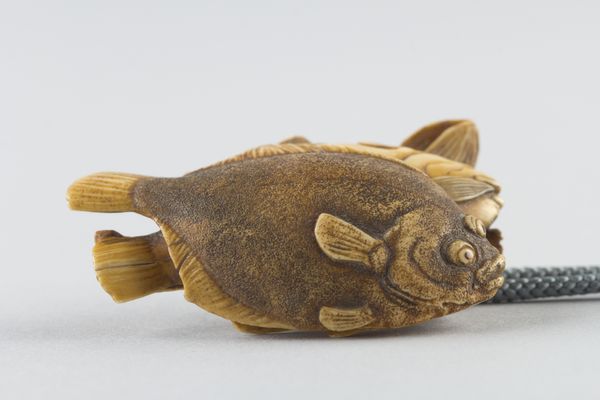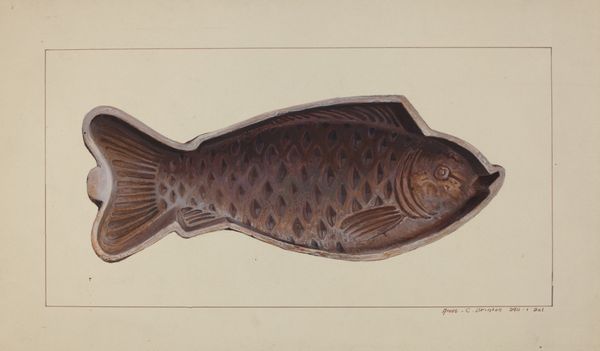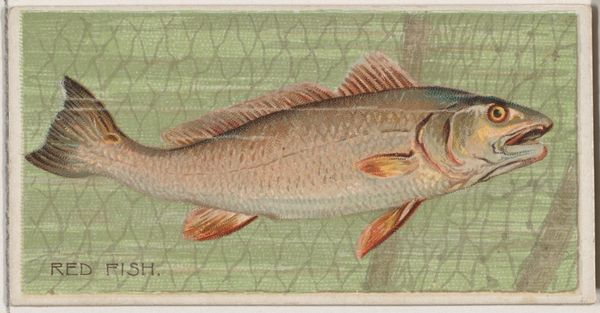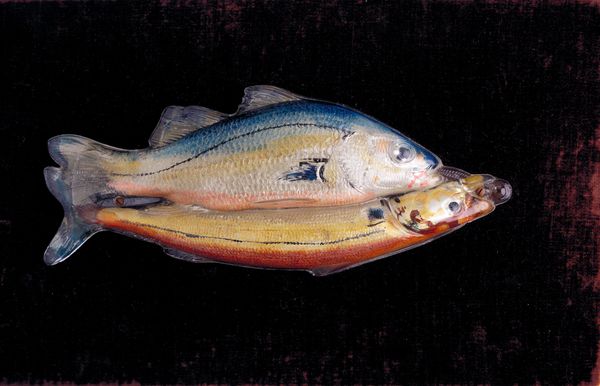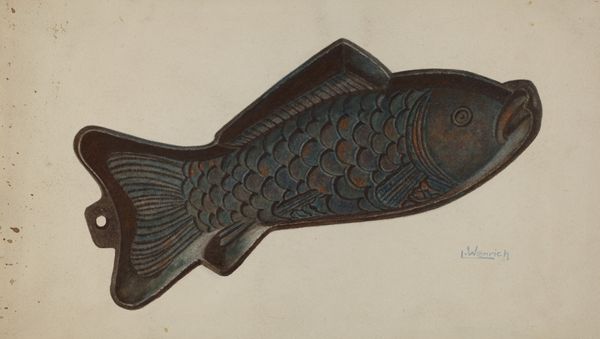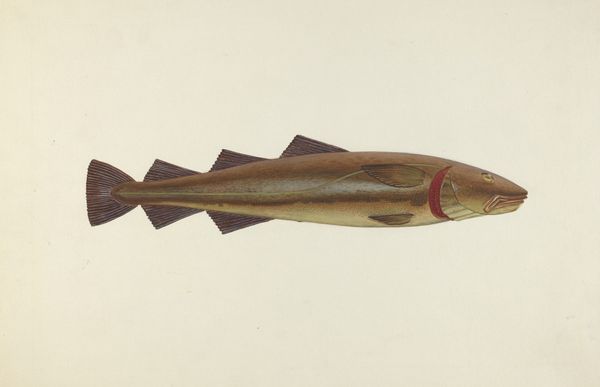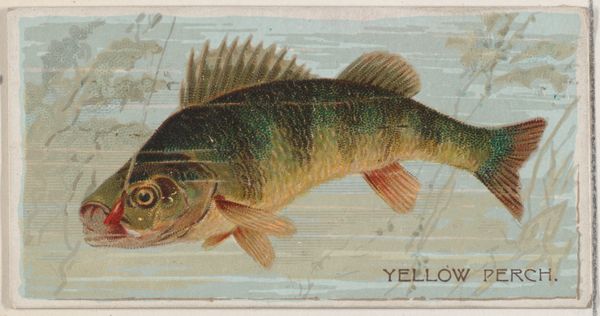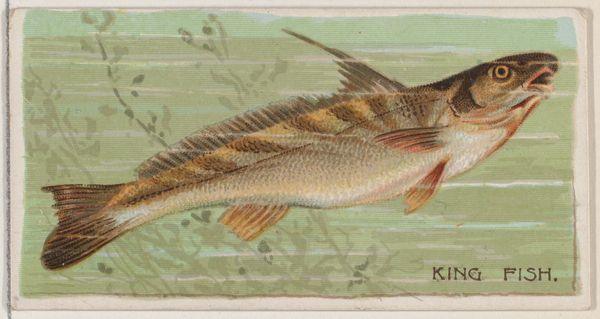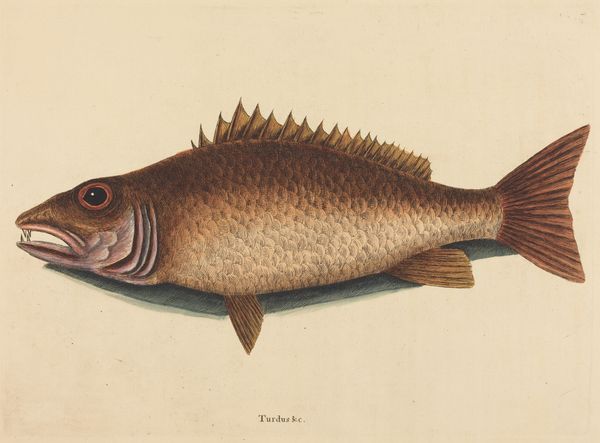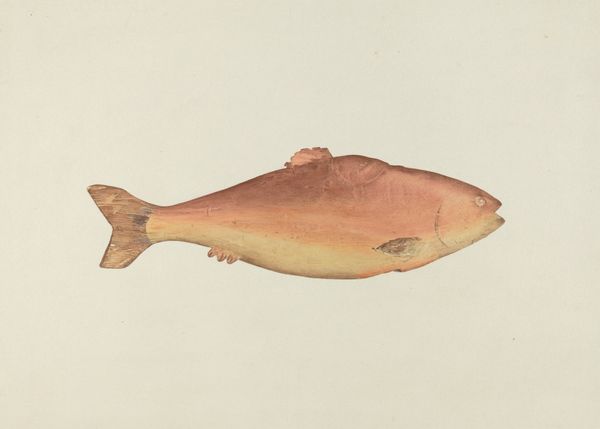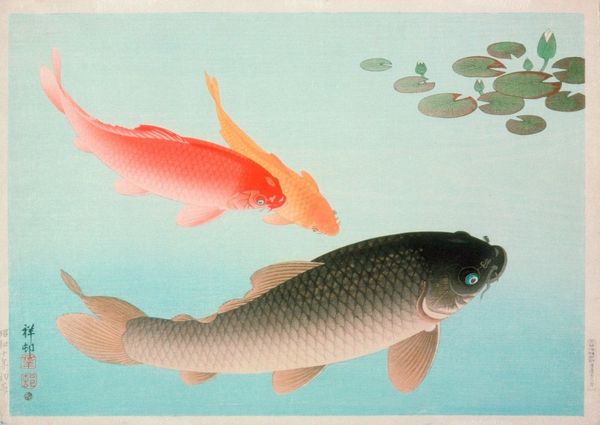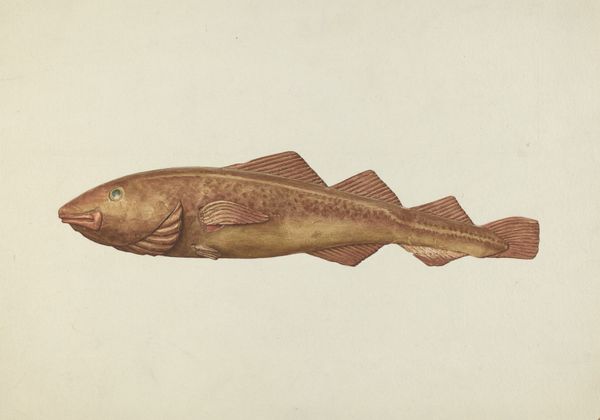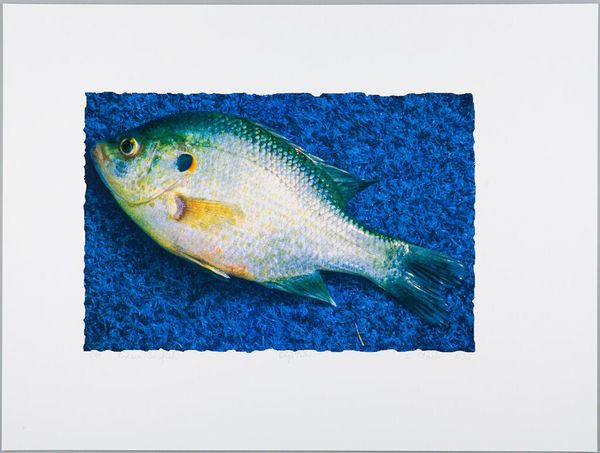
carving, wood
#
carving
#
asian-art
#
japan
#
figuration
#
coloured pencil
#
wood
Dimensions: 5 × 1 1/2 × 11/16 in. (12.7 × 3.81 × 1.8 cm)
Copyright: Public Domain
Curator: Here we have a piece titled "Salmon" by Kono Senri, dating back to the 1820s. Editor: It's smaller than I expected. The texture looks smooth, though you can clearly see the tooling marks. Makes you wonder how long the carving took. Curator: Indeed, this work offers a fascinating glimpse into Japanese craftsmanship. Works of this nature have become quite prominent across various public art domains, often seen as icons in ethnographic collections, highlighting a unique convergence of popular tastes and traditions. Editor: It's interesting to consider this piece as a commodity too. How many were likely produced, and what material limitations would have been overcome for their availability in public display? This particular artwork definitely reflects Japan's commitment to artisanal trades. Curator: The salmon, as a motif, carries significant cultural weight in Japan, often symbolizing perseverance, determination, and prosperity, particularly during this time period. They also serve as crucial social metaphors which explain socio-economic systems in the area. Editor: Thinking about those hand tools, did Senri use any unique varnishing? The material condition also leads me to believe he likely intended this to become an indoor item, given its lack of weathering. The level of refinement also puts its market price on a certain level. Curator: Precisely! It makes you reflect upon access, as we see similar approaches to this sort of commodity reflected across diverse global craft communities throughout this era. Editor: It definitely gives a feel for both aesthetic appreciation and market value being woven into a very tactile piece. There’s this very tangible human connection to the artist in the detail work, and understanding labor gives another important lens to value. Curator: And isn't that human connection really what compels us to pause, analyze, and understand. Thank you for your perspective on craftsmanship. Editor: My pleasure. Reflecting on how this piece moved between hands, market influences, material processes—that enriches the whole viewing.
Comments
No comments
Be the first to comment and join the conversation on the ultimate creative platform.
